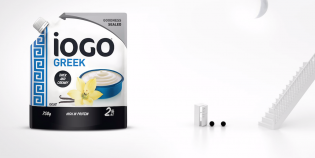Attendees at the Institute of Communication Agencies’ Future Flash 2010 conference heard oft-repeated advice today: advertisers have to walk away from the conventions of the past and, instead, be collaborative and agile with the understanding that consumers are no longer looking for polished advertising.
“The crowd is king,” said Paul Kemp-Robertson, editorial director of Contagious during his keynote session on day two of the conference in Collingwood, Ont.
One of the biggest challenges facing advertisers is their obsession with control through big, expensive multimedia campaigns, he said. Consumers are no longer interested in 60-second TV commercials, but looking for content they can contribute to and share among their peers.
Brands need to move away from that one-way dialogue, he continued, and create platforms for people that don’t know each other so they can congregate in a space created by the brand and “shift from monologue to dialogue.”
Campaigns don’t have to be “about mass and reach,” said Kemp-Robertson, who touted the benefits of niche marketing.
“The beauty of niche is you get people who are very engaged and create thicker connections… The smaller the network, the thicker the connection,” he said.
For instance, to launch its new flavour, Marmite invited 40 fans to join a secret society called the Marmarati to test the sandwich spread. The brand invited only 40 consumers to join online, but eventually reached over 650,000 people with their efforts.
The second and final day of Future Flash ended with a presentation from Jaron Lanier, author of You Are Not A Gadget. Lanier said that given the sheer volume of communication available at a consumer’s fingertips, attention-gathering on the Internet is unpredictable.
For instance, one kid whining in the back seat after a dentist appointment will become a YouTube star, where another may not.
“It’s a random process,” he said. “What that means is that in a relative sense, even if you can create a spectacular campaign online, it’s still not going to be as big as a [YouTube video of a] cat playing a keyboard.”










